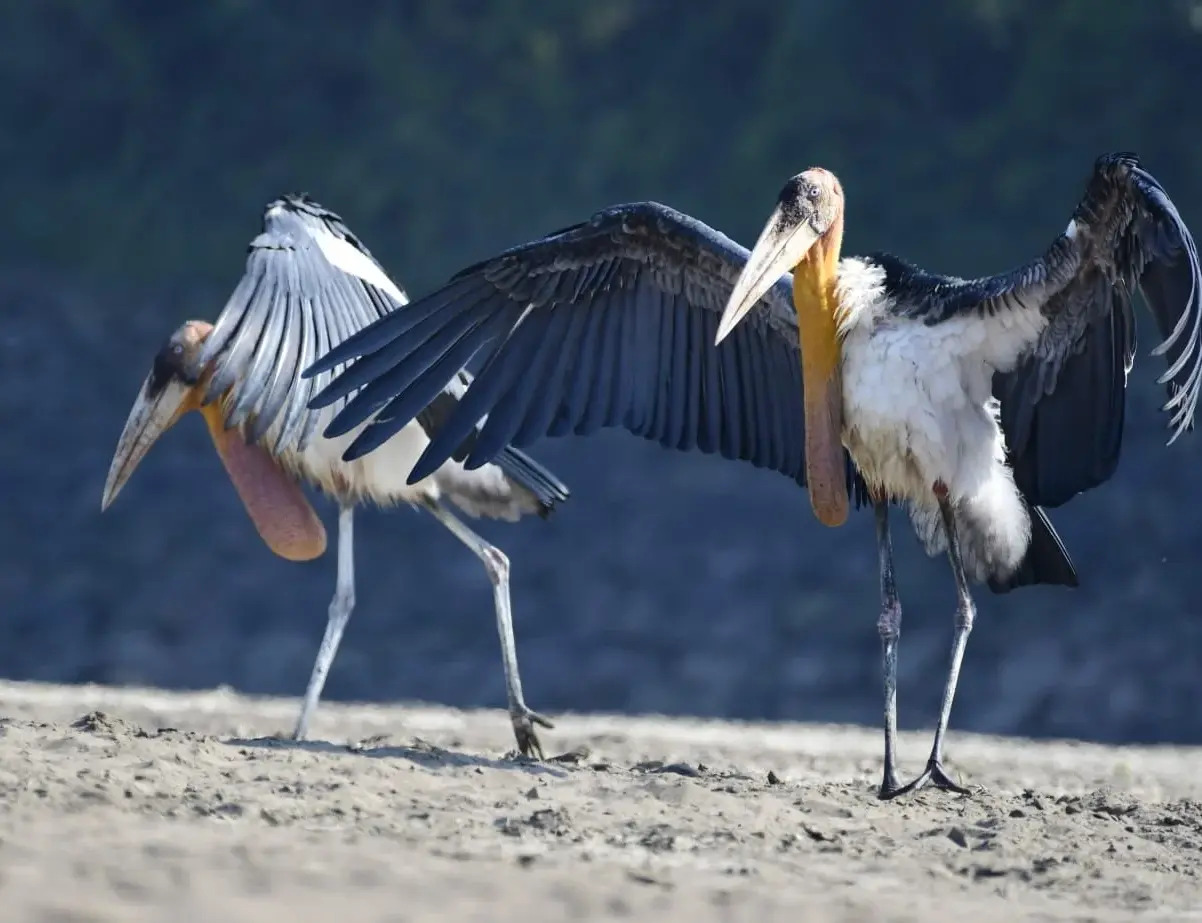
Did you know that the Adjutant Stork, also known as the Greater Adjutant, is one of the rarest storks in the world? This fascinating bird, with its striking appearance and unique behaviors, has intrigued bird watchers and scientists alike. Found primarily in India and Cambodia, the Adjutant Stork plays a crucial role in its ecosystem by scavenging and cleaning up carcasses. Despite its importance, this species faces significant threats from habitat loss and pollution. In this blog post, we'll dive into 30 intriguing facts about the Adjutant Stork, shedding light on its habits, habitat, and the conservation efforts aimed at saving this remarkable bird from extinction.
30 Facts About Adjutant
Adjutants are fascinating birds with unique characteristics and behaviors. Let's dive into some intriguing facts about these remarkable creatures.
What is an Adjutant?
Adjutants are large storks found in parts of Asia. Known for their distinctive appearance and behavior, these birds play a crucial role in their ecosystems.
- Scientific Name: The scientific name for the greater adjutant is Leptoptilos dubius.
- Family: They belong to the stork family, Ciconiidae.
- Size: Greater adjutants can reach up to 5 feet in height.
- Wingspan: Their wingspan can extend over 8 feet, making them impressive fliers.
- Weight: These birds can weigh between 10 to 18 pounds.
Habitat and Distribution
Adjutants are primarily found in specific regions of Asia. Their habitats are diverse, ranging from wetlands to urban areas.
- Geographic Range: They are mainly found in India and Cambodia.
- Habitat: Adjutants prefer wetlands, marshes, and sometimes garbage dumps.
- Urban Adaptation: In some cities, they have adapted to living near human settlements.
- Nesting Sites: They often nest in tall trees or on buildings in urban areas.
- Migration: Some populations are known to migrate seasonally.
Physical Characteristics
Adjutants have several distinctive physical features that set them apart from other birds.
- Bald Head: They have a bald head and neck, which helps them stay clean while feeding.
- Pouch: A large, inflatable throat pouch is a notable feature.
- Bill: Their long, thick bill is perfect for scavenging.
- Legs: Long legs help them wade through water easily.
- Plumage: They have dark, glossy feathers on their wings and back.
Diet and Feeding Habits
Adjutants are opportunistic feeders with a varied diet. They play a vital role in their ecosystems by cleaning up carrion.
- Scavengers: They primarily feed on carrion and dead animals.
- Live Prey: Occasionally, they hunt small mammals, birds, and fish.
- Garbage: In urban areas, they are often seen scavenging in garbage dumps.
- Feeding Technique: They use their strong bill to tear apart their food.
- Ecosystem Role: By consuming carrion, they help prevent the spread of disease.
Reproduction and Lifespan
Adjutants have interesting reproductive behaviors and a relatively long lifespan for birds.
- Breeding Season: Their breeding season typically occurs during the dry season.
- Nesting: They build large nests out of sticks in tall trees.
- Clutch Size: Females usually lay 2 to 4 eggs per clutch.
- Incubation: Both parents take turns incubating the eggs for about a month.
- Chick Development: Chicks fledge after about 3 to 4 months.
Conservation Status
Adjutants face several threats in the wild, leading to concerns about their conservation status.
- Endangered: The greater adjutant is listed as endangered by the IUCN.
- Habitat Loss: Wetland drainage and deforestation are major threats.
- Pollution: Pollution, especially in urban areas, affects their health.
- Conservation Efforts: Various organizations are working to protect their habitats.
- Community Involvement: Local communities play a crucial role in conservation efforts.
Final Thoughts on Adjutant Birds
Adjutant birds, with their striking appearance and unique behaviors, truly stand out in the avian world. From their impressive height to their vital role in ecosystems as scavengers, these birds are fascinating creatures worth learning about. Their conservation status highlights the importance of protecting their habitats and ensuring their survival for future generations.
Understanding the adjutant bird’s role in nature helps us appreciate the delicate balance of our ecosystems. By spreading awareness and supporting conservation efforts, we can contribute to the preservation of these remarkable birds. So next time you spot an adjutant bird, take a moment to admire its beauty and remember the crucial part it plays in our environment.
Thanks for joining us on this journey through the world of adjutant birds. Keep exploring and learning about the incredible creatures that share our planet.
Was this page helpful?
Our commitment to delivering trustworthy and engaging content is at the heart of what we do. Each fact on our site is contributed by real users like you, bringing a wealth of diverse insights and information. To ensure the highest standards of accuracy and reliability, our dedicated editors meticulously review each submission. This process guarantees that the facts we share are not only fascinating but also credible. Trust in our commitment to quality and authenticity as you explore and learn with us.
